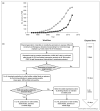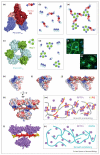Expression of recombinant glycoproteins in mammalian cells: towards an integrative approach to structural biology
- PMID: 23623336
- PMCID: PMC4757734
- DOI: 10.1016/j.sbi.2013.04.003
Expression of recombinant glycoproteins in mammalian cells: towards an integrative approach to structural biology
Abstract
Mammalian cells are rapidly becoming the system of choice for the production of recombinant glycoproteins for structural biology applications. Their use has enabled the structural investigation of a whole new set of targets including large, multi-domain and highly glycosylated eukaryotic cell surface receptors and their supra-molecular assemblies. We summarize the technical advances that have been made in mammalian expression technology and highlight some of the structural insights that have been obtained using these methods. Looking forward, it is clear that mammalian cell expression will provide exciting and unique opportunities for an integrative approach to the structural study of proteins, especially of human origin and medically relevant, by bridging the gap between the purified state and the cellular context.
Copyright © 2013 Elsevier Ltd. All rights reserved.
Figures




References
-
- Nettleship JE, Assenberg R, Diprose JM, Rahman-Huq N, Owens RJ. Recent advances in the production of proteins in insect and mammalian cells for structural biology. J Struct Biol. 2010;172:55–65. - PubMed
-
- Apweiler R, Hermjakob H, Sharon N. On the frequency of protein glycosylation, as deduced from analysis of the SWISS-PROT database. Biochim Biophys Acta. 1999;1473:4–8. - PubMed
Publication types
MeSH terms
Substances
Grants and funding
LinkOut - more resources
Full Text Sources
Other Literature Sources
Miscellaneous

